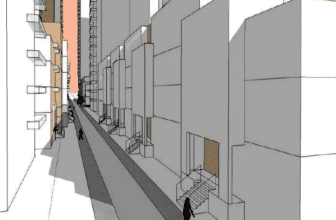Home » Sustainable Insights ( Blogs ) » Monday Flashback 12 – Kangla Palace, Manipur
Monday Flashback 12 – Kangla Palace, Manipur
The Palace of Kangla is an old palace at Imphal in Manipur (Kangleipak). It was situated on both sides (western and eastern) of the bank of the Imphal River. But now it remains only on the western side of the bank. Only the ruins remain now. Kangla means “dry land” in old Meetei. It was the traditional seat of the past Meetei rulers of Manipur.
(Kangla)’ was the ancient capital of Kangleipak from the ancient times down to the year 1891 AD. It is located at the heart of the Imphal city almost intersected by 24°N Latitude, 94°E Longitude and it is 2,619 feet (798 m) above mean sea level. It is situated on the western bank of the Imphal River.
In ancient times, ‘Kangla’ was the royal palace since the reign of Pakhangba who ascended the throne in 20,000 BC according to Wakoklon Heelel Thilel Salai Amai Eelon Pukok PuYa
In pre-Nongda Lairel Pakhangba (23 BC) period, a ruling clan named Khaba ruled from ‘Kangla’. ‘Kangla’ is not only the seat of political power but also a holy place for religious worship and ceremonies. There are a number of ancient treaties/manuscripts especially “Sakoklamlen” “Chinglon Laihui”, “Nunglon” etc., which lay down the rules for the construction, worship, ceremonies relating to ‘Kangla’.these palace was surrounded by a huge channel called”kangla pat”.
The Government of Manipur, to translate into action the general desire and aspirations of the people, had allocated a place for the Assam Rifles at Mahakoireng and had also requested the Union Government frequently to shift the Assam Rifles from ‘Kangla’.
The State Government also engaged Prof. Nalini Thakur of School of Planning and Architecture, New Delhi to prepare a Concept Development Plan (CDP) of ‘Kangla Fort’. The ‘CDP’ to develop ‘Kangla Fort’ as a unique Archaeological Park in the region has been approved by the State Government. The development of ‘Kangla’ has started recently. After completion of the development works, ‘Kangla Fort’ will become a unique Archaeological Park (Heritage Park), in the entire North-Eastern region.
The essence of ‘Kangla Development Project’ is the preservation of the state heritage and to restore ‘Kangla’ to its pristine glory. The salient features of the ‘Project’ are the development and beautification of the ancient historical ruins and sacred and holy places inside ‘Kangla’, including the Citadel and temples in ruins, the “Nungjeng Pukhri” and reconstruction of ‘Kangla Sha’ (the State emblem), which were razed to the ground by the British Colonial forces at the end of the Anglo-Manipuri War of 1891.
Documentation of the ancient structures, holy and sacred places, publication of book on ‘Kangla’ with rare photographs are also one of the major target of the ‘Project’. Plantation of indigenous trees, medicinal plants etc., are other distinct features of the ‘Project’. Excavation of the inner moat, which is now lying as a dry ditch, conservation of the historical structures are parts of the ‘Project’ to restore ‘Kangla’ to its glorious past. Lastly, a majestic temple of Lord Pakhangba is also proposed for construction at a suitable place to fulfill the general wish and aspirations of the people of Manipur.
The Kingdom of Manipur developed at Kangla. Being a political and religious centre, Kangla grew into a formidable fortress city over the centuries. It is from this capital that the Ningthoujaclan gradually wielded enough political and military power to become the most dominant clan in Manipur. The royal chronicle of Manipur, Cheitharol Kumbaba, contains many references to the development of Kangla by successive reigning kings in Manipur.
The royal chronicle records that King Khagemba (1597–1652), the conqueror of the Chinese, constructed a brick wall at the western gate of ‘Kangla Fort’ in 1632. It appears that the art of brick making was acquired from the Chinese prisoners who were captured during the Chinese invasion of the eastern frontier of Manipur. His son, King Khunjaoba (1632–1666), carried out fortification and beautification work of Kangla Fort. It is believed that the king excavated a moat (Thangapat) on the western side of the Fort. The Fort was further enlarged by King Gharib Nawaz and other successive kings of Manipur.
It is famous in the history of Manipur. In the evening of March 24, 1891 British Gorkha troops attacked Juvraj Tikendrajit’s residence in the Palace Compound, killing many innocent civilians including women and children who were watching a Ras Lila dance. The Manipuris struck back and the British was put on the defensive. In the ensuing chaos, five British officers including Frank St. Clair Grimwood, the Political Agent, and James Wallace Quinton, the Chief Commissioner of Assam, were lynched by a mob. This resulted in the Anglo-Manipur War in 1891. The British forces finally defeated the Manipuri forces and hoisted the Union Flag in Kangla on 27 April 1892. It was occupied by the British, declaring it as the cantonment area or the ‘British Reserve’ till they left Manipur in 1947.
Its occupation by the Assam Rifles, an Indian paramilitary force was a major source of discontent of the local people. M. M. Jacob, the then Minister of State for Home in 1992 had announced in a speech that the Assam Rifles would hand over the historic fort to the state government. This finally came true on November 20, 2004, when Prime Minister Manmohan Singh handed over the historic Kangla Fort to Manipur state government.
SaveSavedRemoved 0








